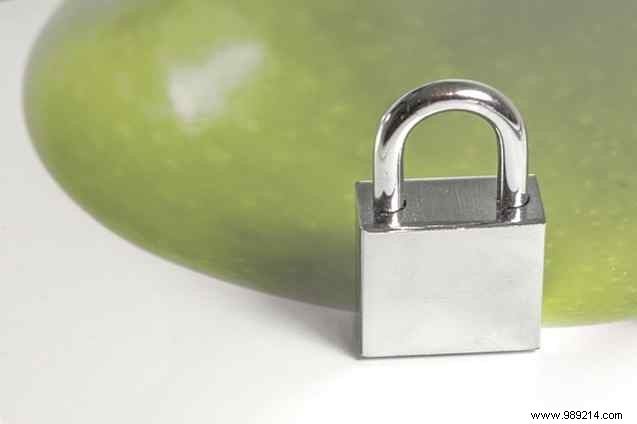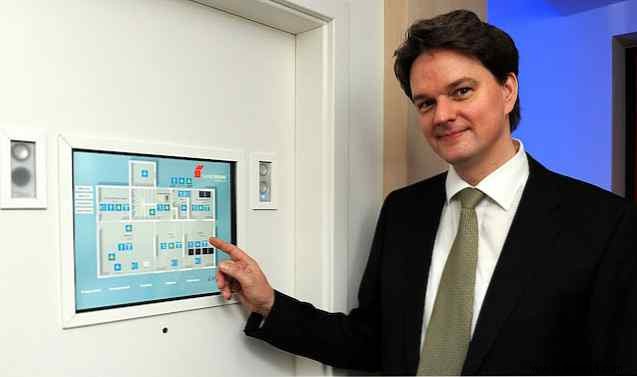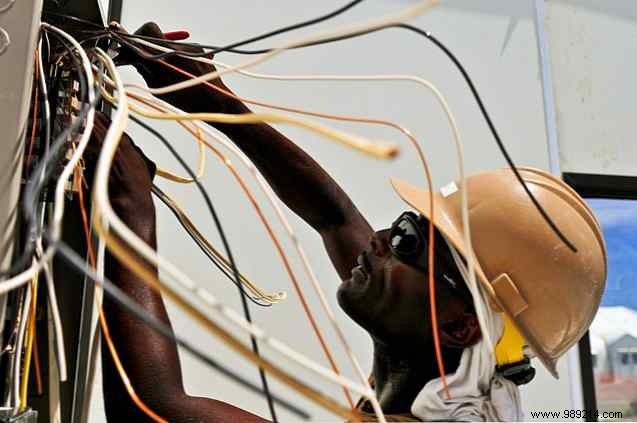Smart homes are gaining in popularity these days, but you might be surprised to learn that they've been around for a long time. MakeUseOf spoke to one of our regular readers and commenters, Ben Stutt, from Rock Hill, South Carolina, USA, about his experiences living in a smart home.
Ben has been living in an 1,100-square-foot smart home since the mid-1990s, which he put together in the mid-1980s. X10 is a wired communication protocol for home automation systems, using lines to allow two devices to communicate with each other. In 20 years of using the system, here's what Ben learned...

While setting up a proper smart home in the mid-1990s, I got my first X10 in the mid-1980s. It was a simple light and transmitter that allowed me to turn off the light in my backyard workshop without ever going outside. .
Back then the price was something like $30 for the setup. The kit consisted of a simple plug-in receiver and a handheld transmitter. The light was then plugged into the receiver.
Over the years, I've moved many times, and somewhere along the way the original setup was lost.

I rediscovered automation in the mid-90s, when I decided to automate the lighting in the place where I lived at the time. There were maybe five or six lights. This time, I used hardwired light switch receivers and two transmitters. A plug-in receiver was still needed to translate the RF (radio frequency) sent by one of the two transmitters.
It didn't have any macro capabilities in that setup. It was pretty simple:just turn light #1 on, light #2 on, light #2 off, all by pressing the corresponding button on the handheld transmitter.

My current setup uses various types of transmitters and various types of receivers. The X10 motion sensor can be configured independently or through the hub programmed through my computer. Or both at the same time. For example:

You will light something when you need it. What you cannot control is your own laziness or forgetfulness. I'm lazy. (Editor's note:It's not just you, Ben.) I can control all the lights in the house from any of several handheld keyboards, various plug-in controllers, any computer on my home network, or even my cell phone. That's where an automated smart home really comes in handy.
One of my transmitters is a smaller and simpler programmable clock type controller which is also an illuminated bedside clock. You can turn a limited number of lights on or off. So I created an "all lights on" button, and an "all off" button. It comes in handy when you go to bed and find you forgot to turn off the kitchen light or back porch light.
On the wall by my door, I have a wall mounted device that has a button to turn all the lights on/off. Very useful when leaving the house and forgot to turn off a light on the opposite side of the house. Just press that button, and any lights you've left on will turn off from there.
I also use timers to turn things off that I'm likely to forget. For example, the bathroom exhaust fan is set on a timer. When manually turned on, it automatically turns off after 5 minutes.
I don't have any real data on how much it saves me. But along with all LED lights 7 Creative Uses for Color LED Home Automation Lighting 7 Creative Uses for Color LED Home Automation Lighting Turning lights on automatically is great, but it doesn't take advantage of the full color spectrum Available with RGB lighting. For that, we need to be creative. Read More

Homeowners know that security is not as simple as installing a lock. It is about how you can act in case of an emergency; how the alarm works; and how safe the house feels when you're not in it.
X10, as well as several other companies, have burglar alarms that are compatible with X10 automation. One feature is to turn on all the lights when the alarm goes off. And there are other third-party gadgets too.
In my bedside clock controller, the "all lights on" button allows me to spring into action when I hear a noise and want light.
Then there is a light that I have put as a security light. It turns on at dusk, within 10 minutes in either direction (a built-in feature), and then turns off at 11:00 p.m. This makes the house look lived in even if I'm not home. I could have as many of these as I wanted, but for my small house, one is enough.

I've looked at several other systems, and some like Insteon (one of the best smart hub solutions. Which smart home automation hub is best for you? Which smart home automation hub is best for you? For a while, the people thought of the idea is nothing more than a gimmick, but recent product launches have shown that smart home automation is starting to deliver on its promises Read More) are even compatible with X10 devices. But nothing comes close to X10 for the price yet.
If you can do some simple wiring like flipping a light switch, you can probably install X10. Otherwise, you can use the plug-in controllers for plug-in type lamps without wiring or programming knowledge.
I wouldn't recommend it to everyone because it's a bit more involved than getting up to turn a light on or off. But if a technician sets it up for you, you can use it with very little training.
For existing X10 users, there's no point in ditching everything and going with something more expensive just because it's newer. If my needs get bigger, I might see a gradual transition to Insteon as I could replace one device at a time without losing any functionality.

X10 has a problem for users in the United States. It is a system based on power lines, and was originally developed in England. In the US we use a split phase electrical system where we have 240VAC going into the house and the breaker panel after which most of the power is split between two 120VAC lines for lighting and outlets. This means that if a device is on the other phase of 120VAC, the signal must go to the transformer on the outside and the other side.
You can fix this by getting some kind of bridge. That can be as simple as a capacitor in the breaker panel, or a device that plugs into one of the 220VAC outlets (stove, water heater, clothes dryer, and possibly several other larger appliances that are using both phases). ).
Also, when X10 was first invented, almost all electronic devices, such as a television, used linear power supplies. Now they mainly use switching power supplies. And those switching power supplies see the X10 signal mounted on the power as noise and try to filter it out. I have several plug-in filters that prevent this from happening.
All of these are integrated into the total cost of a smart home. How much does a smart home really cost? How much does a smart home really cost? A smart home could change your life, freeing up time in your day and regulating your routine so you don't have to remember what needs to be done. But how expensive is it, really? Read more . Due to these types of issues, X10 has a reputation of not being as reliable as a purely RF/WiFi type system. But WiFi systems have their own problems, just different ones.
Ben is one of our regular commenters here at MakeUseOf, and I'm sure he'll be happy to answer any questions you have about X10 or his experiences with home automation. But just like him, we'd love to hear from other smart home users about his experiences and advice.